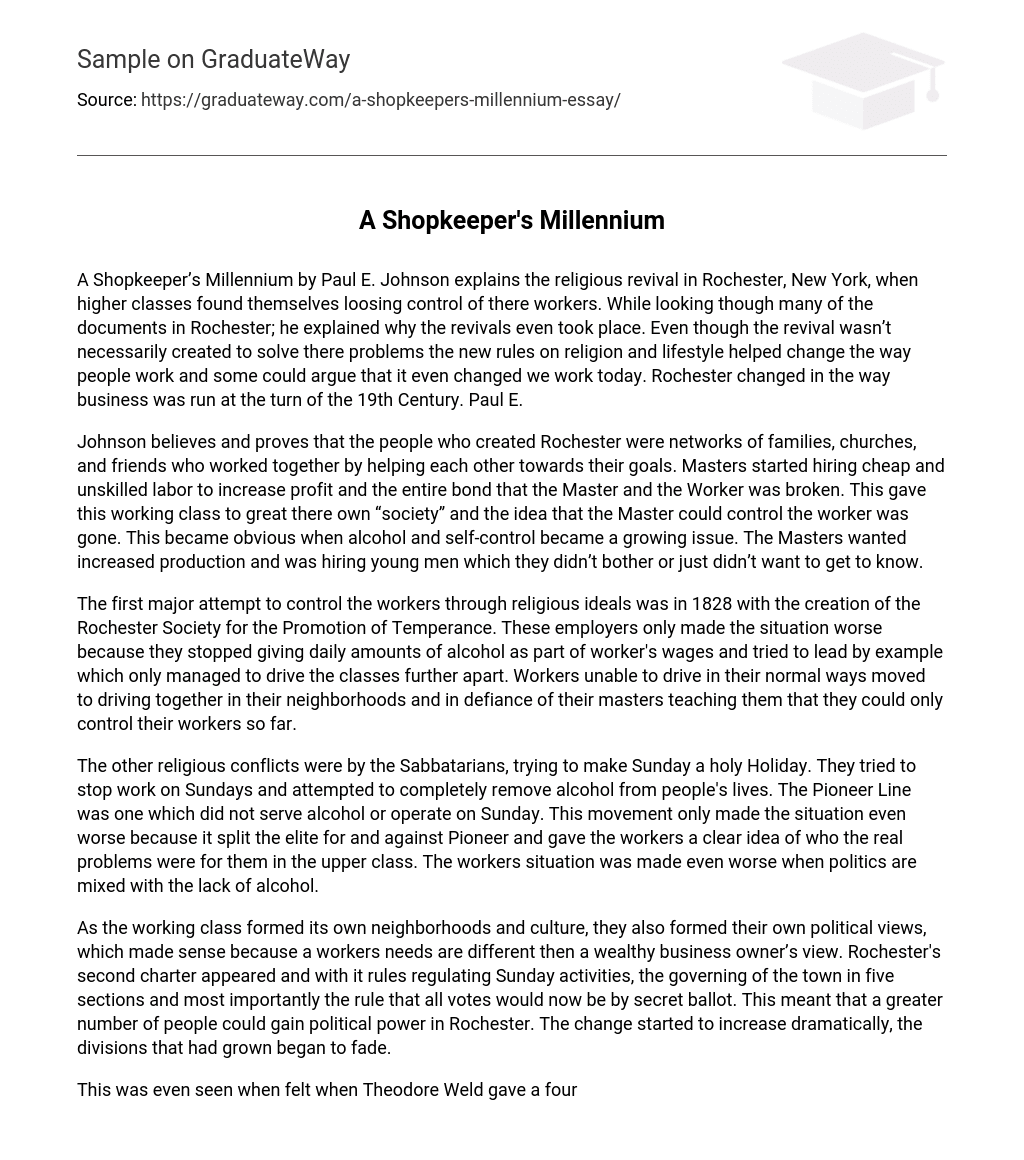A Shopkeeper’s Millennium by Paul E. Johnson explains the religious revival in Rochester, New York, when higher classes found themselves loosing control of there workers. While looking though many of the documents in Rochester; he explained why the revivals even took place. Even though the revival wasn’t necessarily created to solve there problems the new rules on religion and lifestyle helped change the way people work and some could argue that it even changed we work today. Rochester changed in the way business was run at the turn of the 19th Century.
Paul E. Johnson believes and proves that the people who created Rochester were networks of families, churches, and friends who worked together by helping each other towards their goals. Masters started hiring cheap and unskilled labor to increase profit and the entire bond that the Master and the Worker was broken. This gave this working class to great there own “society” and the idea that the Master could control the worker was gone. This became obvious when alcohol and self-control became a growing issue. The Masters wanted increased production and was hiring young men which they didn’t bother or just didn’t want to get to know.
The first major attempt to control the workers through religious ideals was in 1828 with the creation of the Rochester Society for the Promotion of Temperance. These employers only made the situation worse because they stopped giving daily amounts of alcohol as part of worker’s wages and tried to lead by example which only managed to drive the classes further apart. Workers unable to drive in their normal ways moved to driving together in their neighborhoods and in defiance of their masters teaching them that they could only control their workers so far.
The other religious conflicts were by the Sabbatarians, trying to make Sunday a holy Holiday. They tried to stop work on Sundays and attempted to completely remove alcohol from people’s lives. The Pioneer Line was one which did not serve alcohol or operate on Sunday. This movement only made the situation even worse because it split the elite for and against Pioneer and gave the workers a clear idea of who the real problems were for them in the upper class. The workers situation was made even worse when politics are mixed with the lack of alcohol.
As the working class formed its own neighborhoods and culture, they also formed their own political views, which made sense because a workers needs are different then a wealthy business owner’s view. Rochester’s second charter appeared and with it rules regulating Sunday activities, the governing of the town in five sections and most importantly the rule that all votes would now be by secret ballot. This meant that a greater number of people could gain political power in Rochester. The change started to increase dramatically, the divisions that had grown began to fade.
This was even seen when felt when Theodore Weld gave a four hour lecture, on New Years Eve 1830, against alcohol, people stopped serving alcohol as his speech went on and within days; many of the grocery stores dumped all of their alcohol into the street. Stores that did now follow this example had to either leave town or agree to the change and did the same. Simply because they lost there ability to advertise and it was a battle they could not win. The revivals created a solution to all the disorder and confusion that the developing Rochester had been struggling with.
They spread rapidly in an America that was not experiencing problems that different from that of Rochester. Rochester managed to bond together the pairing of religion and business to create a working class that was obedient, hard working, and sober. Even though some classes where not mentioned like the free slaves and woman the small amount of documentation made it difficult to know what they where thinking. Since free slaves and woman where usually taking the lowest level of jobs and working at home the results may or may not have changed much.





